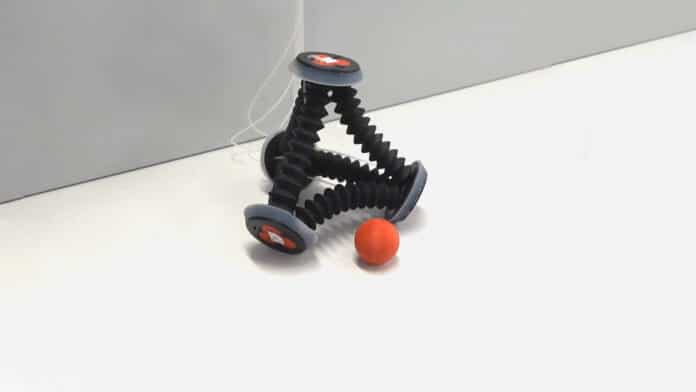Unstructured environments require versatile robots with adaptable morphology that can perform multiple goal-directed actions, including locomotion in confined spaces, environmental mapping, object retrieval, and object manipulation.
In response to these challenges, researchers at the University of Bristol have built Tetraflex, a tetrahedron-shaped robot with flexible piping that can move through small gaps or over challenging terrain.
The Tetraflex robot is composed of disc-shaped rigid nodes located at the four corners of the device. These nodes are connected to one another via six separate struts, each formed of an airtight rubber bellow. The length of the strut can be controlled by varying the air pressure within the bellow.
Higher pressures cause the bellow to extend, while lower pressures cause it to contract. By controlling the pressure in each bellow simultaneously, it is possible to control the robot’s shape and size change, allowing it to switch back and forth between different body shapes. This, in turn, allows it to move across surfaces in multiple different ways, such as rolling or crawling.
The Tetraflex robot is potentially useful for mobility in challenging or confined environments, such as navigating rubble to reach survivors of an earthquake, performing oil rig inspections, or even exploring other planets.
The robot can also encapsulate fragile objects and safely transport them within its soft body, helping with ecological surveying or nuclear decommissioning.
In future work, researchers plan to apply machine learning algorithms which could allow them to thoroughly explore movement patterns and optimize their current ones.
“The most exciting aspect of this study for me is the versatility of Tetraflex and how we might be able to use these robots to explore challenging terrain and achieve tasks in areas humans cannot access. The multiple gaits available to Tetraflex and object transport capability show this versatility well,” lead author Peter Wharton said in an official statement.
“There could be some really creative and effective ways of moving around or interacting with the environment that we haven’t yet discovered,” he added.
